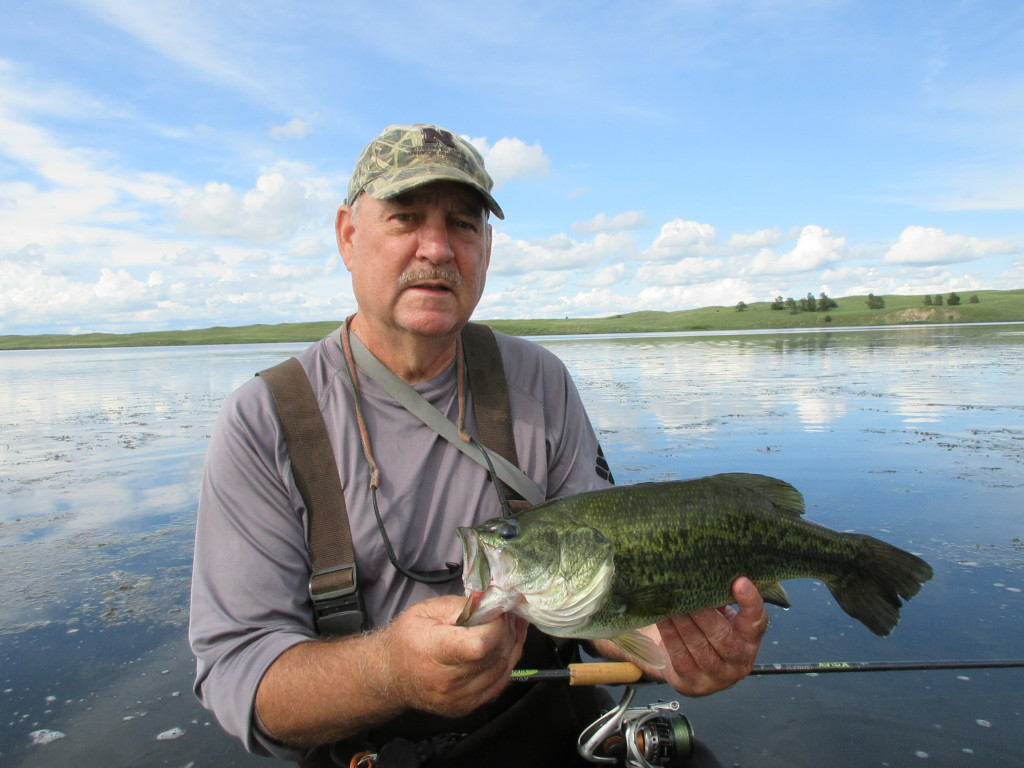
By Daryl Bauer
A few weeks ago I published a blog entitled “Don’t Need No Stinkin’ Boat.” I wanted to point out that a person does NOT have to have a boat to catch fish, a lot of fish, big fish. I also wanted to emphasize that good fishing waters are good whether you have a boat or not–find a way! As an example, I mentioned that shallow water cover often holds fish, even during the summer. Sometimes you just have to find a way to get in there and get ’em!
Continuing with that thought I want to share a video. Yes, the calendar says September, but there is still time to fish shallow water aquatic vegetation.
Many of you already know this. Nothing in this video will surprise you. However, I still hear lots of anglers complain about too much “moss” and needing some place to fish where there is no aquatic vegetation. When I hear that I wonder why in the world would I want to fish where there is no vegetation????? That is where the fish are!
So, I know there are still anglers out there that just plain need to change the way they think about “moss”!
First of all, since I am a somewhat anal, pointy-headed fisheries biologist, let’s get some terms defined. . . . IT AIN’T MOSS! Moss grows on trees. The mats, referred to as “scum” in this video, are algae, filamentous algae. NO, it is not bluegreen algae. It is another type, family, of algae. Our waters contain many different kinds of algae, and different kinds bloom at different times throughout the year, every year.
As you will see in this video, under those algae mats is rooted, submerged aquatic vegetation. Those submerged aquatic plants grow all the way to the surface in shallow water. Then, the filamentous algae floats on and over the plant tops. All of that cover is full of aquatic insects and other critters that fish like to eat. Thus, you have the cover. Then the small fish are there feeding on the creatures in that cover. Of course then larger predator fish are there to feed on the small fish. It is the circle of life! Predator/prey baby, it is what drives the system! Oh, and “habitat is where it’s at”!
OK, so watch the video. Yes, it is a little corny, but it shows you exactly what is going on in that shallow water cover and why you should be fishing it. It also gives some tips on how to fish it:
Do not know that you are going to find any Hydrilla in Nebraska, but that don’t mean nothing. Substitute pondweed or some other species of aquatic plant found in our waters. It functions the same way.
Yes, this is primarily for bass fishing. However, as seen in the video, there are lots of different species of fish that utilize aquatic vegetation. Again, let me say that the fish are there, figure out a way to get them. It can be done. It is done.
You might have to tackle up. Believe me I have reeled in wads of vegetation that had a bass buried somewhere in the middle. Sometimes I landed as much or more vegetation than I did bass flesh. Hey, I was catching fish, and there is nothing better than watching those topwater strikes! Fortunately, the braided super-lines on the market today make it relatively easy to tackle up and have gear heavy enough to go in and get ’em out.
To quote Larry the Cable Guy, “Get-R-Done”!
